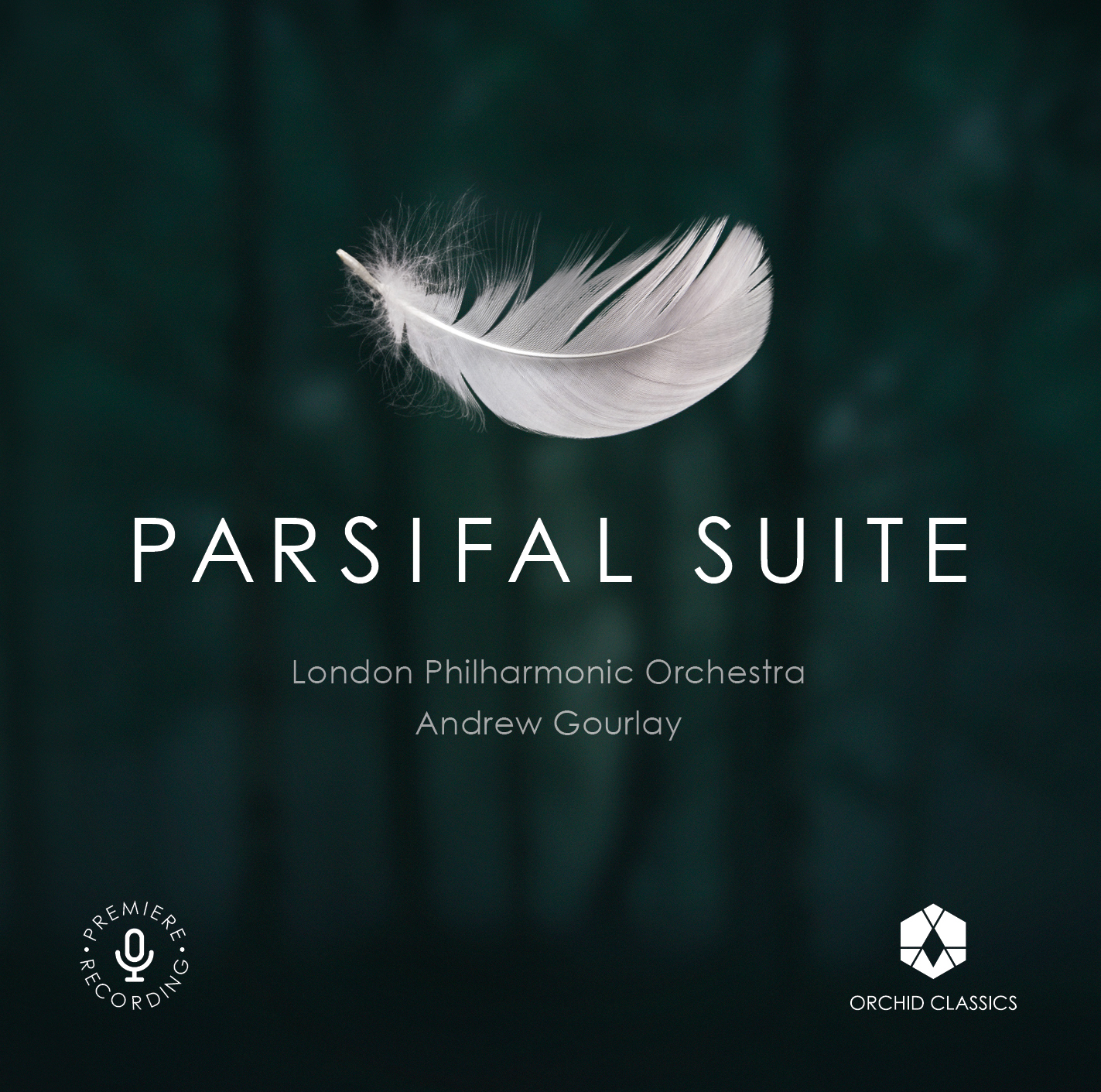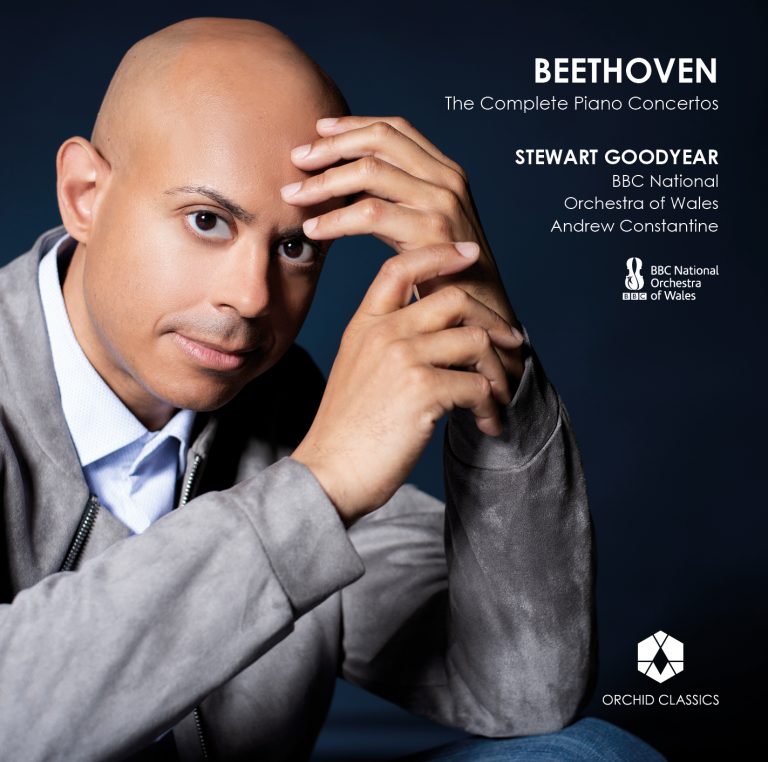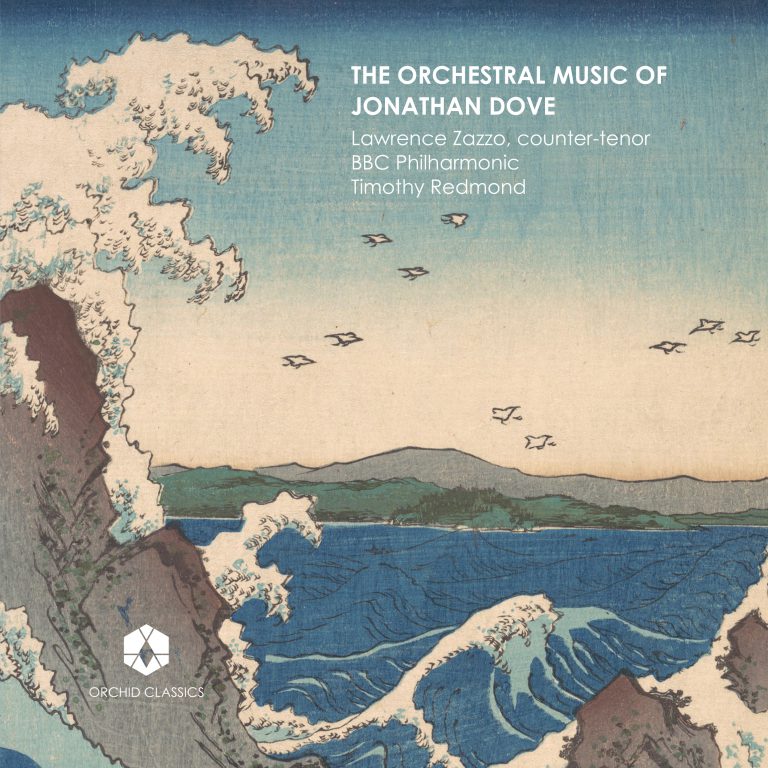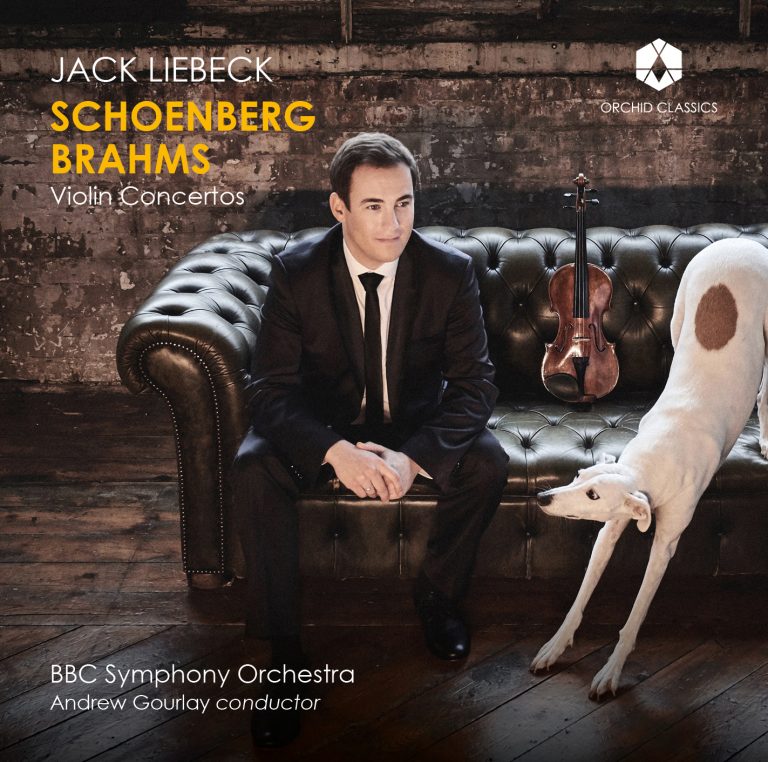Artist Led, Creatively Driven

PARSIFAL SUITE
London Philharmonic Orchestra
Andrew Gourlay, conductor
Release Date: November 4th
ORC100207
PARSIFAL SUITE
Richard Wagner (1813-1883)
Constructed by Andrew Gourlay
1. Act 1 Prelude
2. Act 3 Good Friday Music
3. Act 3 Transformation Music
4. Act 3 Prelude
5. Act 2 Prelude
6. Act 1 Transformation Music
7. Act 3 Finale
Andrew Gourlay, conductor
London Philharmonic Orchestra
Kate Oswin, leader
There exists in classical music a curious intersection between the composer’s intention, the artist’s interpretation and the needs of an audience. Few would disagree that a composer’s vision ought to be respected, but if this stance is taken to an extreme it prizes ‘authenticity’ above all else. The risks of such an approach become apparent when one considers the amount we simply don’t know about a composer’s wishes. Even the most meticulous composer may have made errors on their scores, and many would rejoice in the reinterpretation of their music in the light of modern advances in instruments, auditoria and concert-going practices.
This leads us to the more realistic approach of celebrating a composer’s work in a dynamic way; not treating it as an artefact in a museum, but as an organism open to a certain amount of evolution. In the case of operatic music, there is a well-established tradition of suites drawing together a work’s instrumental highlights, so that this element of the opera may be enjoyed as a more concise instrumental work in the concert hall. And as music ultimately exists to impart meaning and pleasure to the listener, there is a strong case for bringing judiciously pruned excerpts into this arena – especially if it inspires listeners to explore the full opera further.
Andrew Gourlay’s Parsifal Suite is part of this rich tradition of orchestral suites based on operas and ballets, of which there are many examples. Dances from Purcell’s operas were arranged into suites during his lifetime and proved popular with audiences. After Bizet’s death, his friend Ernest Guiraud compiled two orchestral suites of highlights from Carmen, which have become staples of the concert repertoire. Sir Thomas Beecham constructed suites from Handel operas; he also conducted the Four Sea Interludes and Passacaglia from Britten’s opera Peter Grimes, although the first performance was conducted by Britten himself, a week after the opera’s premiere in 1945. Stravinsky created no fewer than three suites from his ballet The Firebird; and Richard Strauss permitted conductor Artur Rodziński to create a pot pourri of the main elements of Der Rosenkavalier. The teenage Strauss was an ardent admirer of Wagner, and when his father, Franz Strauss, was invited to play the horn in the Bayreuth orchestra for the first performances of Parsifal, Richard Strauss was taken along as a treat.
Wagner’s father-in-law Liszt made numerous piano transcriptions of Verdi operas and other works, regarding himself as a musical evangelist bringing operatic and symphonic music to new audiences – in the process reaffirming the principle that music is not set in stone and may be reworked and enjoyed in many contexts. But perhaps the most compelling justification for condensing Wagner’s operatic music into suite form comes from Wagner’s grandson Wieland Wagner, who wrote: “The essence of the work is to be found, after all, in the orchestra. This is the subtext, the universal subconscious that links Wagner’s characters together and that is tied to the proto-ego of the legend.” This idea was cited by conductor Lorin Maazel when he created his ‘symphonic synthesis’ of the Ring Cycle, and it applies just as well to Gourlay’s Parsifal Suite. Wagner himself was not as rigid about the treatment of his own music as might be imagined by purists. He considered his Wesendonck Lieder for voice and piano to be ‘studies’ for Tristan und Isolde and arranged the song ‘Träume’ for solo violin and chamber orchestra; the remaining songs were orchestrated by conductor Felix Mottl.
It was while Wagner was staying at a cottage belonging to Otto and Mathilde Wesendonck in 1857 that he conceived Parsifal, later recalling:
“… on Good Friday I awoke to find the sun shining brightly for the first time in this house: the little garden was radiant with green, the birds sang, and at last I could sit on the roof and enjoy the long-yearned-for peace with its message of promise. Full of this sentiment, I suddenly remembered that the day was Good Friday, and I called to mind the significance this omen had already once assumed for me when I was reading Wolfram’s Parzival… its noble possibilities struck me with overwhelming force, and out of my thoughts about Good Friday I rapidly conceived a whole drama, of which I made a rough sketch with a few dashes of the pen, dividing the whole into three acts.”
In 1879, Wagner’s second wife Cosima (Liszt’s daughter) corrected this romanticised account: “R today recalled the impression which inspired his ‘Good Friday Music’; he laughs, saying he had thought to himself, ‘In fact it is all as far-fetched as my love affairs, for it was not a Good Friday at all – just a pleasant mood in Nature which made me think, ‘This is how a Good Friday ought to be’’”. Parsifal was eventually finished in 1882. This was Wagner’s final complete operatic work, even though he had conceived the idea 25 years earlier – and had first read Parzival in 1845. Wagner frequently looked to historical and mythological sources for inspiration; his Ring Cycle was based on Norse mythology and, as mentioned in his lyrical recollections, Parsifal was inspired by a medieval epic poem by Wolfram von Eschenbach charting the quest of the Arthurian knight, Parzival (Percival), as he seeks the Holy Grail.
Wagner thought of each of his operatic works, for which he wrote music and libretto, as a thoroughly integrated artistic vision or Gesamtkunstwerk. In the case of Parsifal he coined a more elaborate category: Ein Bühnenweihfestspiel or ‘A Festival Play for the Consecration of the Stage’. Parsifal was written for the stage at Wagner’s opera house at Bayreuth, the Bayreuth Festspielhaus or Festival Theatre, where it was first performed at the second Bayreuth Festival in 1882.
Gourlay describes his Parsifal Suite as follows:
“Parsifal surely contains some of Wagner’s greatest orchestral writing, yet there is little orchestral-only material currently available for concert performance. The opening prelude is a staple, often performed in combination with the Good Friday Music, but I know of no suite of a significantly longer duration that has been produced to my liking.
“I therefore set about constructing an orchestral suite that would give us more time to settle into the music of Parsifal. The result is 45 minutes of continuous music from the opera.
“From the opening prelude, we move to the grandeur of Act 3 Scene 1, the Good Friday Music, during which Parsifal is anointed King of the Grail. A solo oboe guides us through the following passage for gentle strings and woodwinds, accompanying Parsifal as he admires the beauty of the woods and meadow, which are glowing in the morning light. The sound of midday bells begins Wagner’s own transition to Scene 2, as the forest scene dramatically transforms into the mighty hall of the castle of the Grail. The knights process in from both sides, carrying the wounded Amfortas and the coffin of Titurel. We move to the Act 3 prelude, followed by the prelude to Act 2, ‘Klingsor’s Magic Castle’. Next, the scene change from Act 1, in which Gurnemanz leads Parsifal through the rocky walls and (as in Act 3) the forest magically transforms into the great hall of the Grail. We return to Act 3 for a brief bridge passage (for timpani, hushed brass, and pizzicato strings), which accompanies the ominous figure of Parsifal as he emerges from the forest fully covered in black armour. This passage navigates us to the final scene, and the opera’s natural conclusion. Parsifal holds aloft his holy spear, with which he has healed Amfortas. He takes the Grail, which glows brighter and brighter, and swings it in blessing. “Miracle of supreme salvation!”
“This project has been a labour of love, and I sincerely hope that it might be a useful addition to the orchestral repertoire.”
© Joanna Wyld, 2022
Andrew Gourlay
Conductor
Andrew Gourlay studied conducting at the Royal College of Music and first came to prominence when he won the 2010 Cadaqués International Conducting Competition, following which he spent two years as Assistant Conductor of the Hallé Orchestra. Since then he has worked with most of the UK’s leading orchestras, as well as extensively in Europe, North America and Australia. He was Music Director of the Orquesta Sinfónica da Castilla y León in Valladolid from 2016 to 2021, with whom he recorded Rachmaninov Symphony No.2 and Shostakovich Symphony No.10. Other recording collaborations have included the London Symphony Orchestra, BBC Symphony Orchestra, BBC National Orchestra of Wales, Britten Sinfonia and the Royal Liverpool Philharmonic Orchestra. He has appeared regularly at the Proms in London, most recently in August 2022 with the National Youth Orchestra of Great Britain. He has conducted world premiere performances of works by many leading composers including Turnage, Hillborg and Elfman as well as national premieres of Reich, Larcher, Weir and Rautavaara. Opera engagements have included the Royal Opera, Birmingham Opera Company (with the CBSO) and the Aldeburgh Festival, and in 2023 he will conduct The Cunning Little Vixen for Opera North.
London Philharmonic Orchestra
One of the finest orchestras on the international stage, the London Philharmonic Orchestra was founded in 1932 by Sir Thomas Beecham. Since then, its Principal Conductors have included Sir Adrian Boult, Bernard Haitink, Sir Georg Solti, Klaus Tennstedt and Kurt Masur. In September 2021 Edward Gardner became the Orchestra’s Principal Conductor, succeeding Vladimir Jurowski, who became Conductor Emeritus in recognition of his transformative impact on the Orchestra as Principal Conductor from 2007–21.
The London Philharmonic Orchestra has performed at Southbank Centre’s Royal Festival Hall since it opened in 1951, becoming Resident Orchestra in 1992. It also has residencies in Brighton, Eastbourne and Saffron Walden, and performs regularly around the UK. The Orchestra also tours internationally, performing to sell-out audiences worldwide.
The Orchestra broadcasts regularly on television and radio, and has recorded soundtracks for numerous films including The Lord of the Rings. In 2005 it began releasing live, studio and archive recordings on its own label, which now numbers over 120 releases.
⭐️⭐️⭐️⭐️⭐️
BBC Music Magazine
This recording makes a glorious 45 minutes, with immaculately seductive playing from the London Philharmonic Orchestra, and perfect segues from piece to piece – it all slips deliciously down.
Andrew McGregor
Record Review, BBC Radio 3
“A 47 minute suite that allows us to luxuriate in some of Wagner’s most luminous and lovingly crafted orchestral music, played with a breadth and radiance that matches it wonderfully well”










